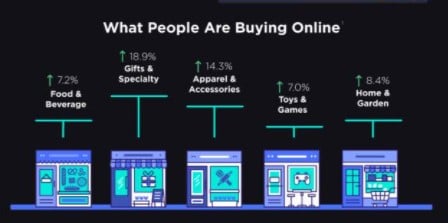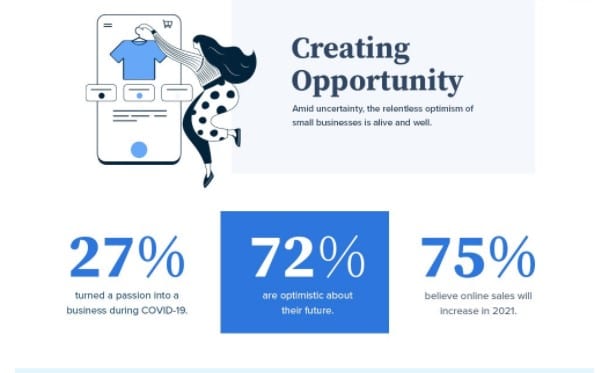Tens of millions of small and medium-size business owners worldwide aren’t in a celebratory mood this year — and for good reason. The COVID-19 pandemic drove many profitable and successful businesses into bankruptcy. As of September, 97,966 businesses were forced into bankruptcy due to the pandemic.

Others have managed to hold on to dear life anxiously waiting for life to return to some sense of normalcy. Many of these businesses had no option but to explore bad credit financing just to keep the lights on a little bit longer.
But a select few that were agile and understood how to continue to reach their customers are well-positioned for the future.
Can All Businesses Survive?
There is no one size fits all answer to determine if a small or medium-sized business can sustain themselves throughout 2021. The list of businesses that are struggling the most includes more obvious sectors like hotels, restaurants, bars, etc.
Businesses that have managed to break even are in a much better position than those that operate at a loss. Those that are turning a profit are still urged to be mindful that much can change in such short notice if the health crisis fails to improve.
One of the biggest misconceptions in the business community is one or more vaccines against the coronavirus will usher in an immediate economic rebound. Expectations for life to return back to its prior state is an assumption individual business owners shouldn’t make.
Also Read
How Successful Businesses Adapted
Small and medium-size business owners can not only survive the pandemic but thrive in the aftermath with a shift in thinking.
Instead of relying on foot traffic to generate sales, companies need to go on the offensive and market their products online. Doing so through social media platforms that offer precise targeting abilities like Facebook makes the process very easy.
This may have seemed like the obvious decision but it also happened to be the only decision. Customers are flocking online in record numbers as they want to take advantage of the safer way to buy goods.
Consumers are buying anything and everything online, even items that aren’t traditionally associated with online purchases, like home and garden items. As customers are moving online and want to buy non-traditional items, businesses need to do so as well to meet the customer where they want to be met.
Longer-Term Benefits
Payment processor PayPal said in May that people over 50 accounted for its fastest-growing segment from March to April. The company noted these trends are sustainable — an implication that online growth will continue across each and every age group.
COVID most certainly didn’t change online buying habits but it did speed up the adoption.
The best part about a transition to the digital universe is that companies don’t need to generate the same amount of sales as before to reap the same profit.
Companies that operated within a physical retail landscape had many overhead fixed costs they had to cover, like rent and insurance. Companies that sold their product within a big-box chain had to share part of the revenue with the retailer.
But when the consumer shops online with a company, the relationship can be much more lucrative.
Small and medium-size businesses that prove themselves able to adapt to the most challenging times in recent history will find it a lot easier to grow moving forward. This is especially if they require outside funding.
The really successful companies that stand out and generate impressive cash flows when times are tough will find it easier to obtain financing at attractive rates. A select few will even catch the attention of individual investors who will inject capital in exchange for a small ownership stake.
The present and future are surprisingly bright, but only for those who want to make it so.
Vaccine Rollout Isn’t A Savior
As of early December, there was just one Western-made vaccine that has been approved. The United Kingdom was the first nation to approve the joint Pfizer-BioNTech vaccine and the first recipient on Dec. 8 was a 90-year old named Margaret Keenan.
The global community rightfully so took a minute out of their lives to marvel at the milestone. Within months of the discovery of a terrible illness, a vaccine was created that can rid the world of the horrible crisis.
But business owners worldwide are in the exact same position as they were prior to Keenan receiving the vaccine. How does a struggling retailer in say Australia benefit from one vaccine dose halfway across the planet? They don’t — at least not right away.
Conclusion: Don’t Sit Back and Wait
The very limited supply of vaccines means it will be reserved exclusively for the population group most at-risk, that is seniors. No one could argue this is the wrong way to proceed. It just means business owners need to hold on tight until there is ample supply to vaccinate a very sizable part of the population.
Timelines of when this can be completed vary from country to country. In the U.S., NationalInstitute of Allergy and Infectious Diseases Director Anthony Fauci said herd immunity is possible by the end of summer 2021 while “normality that is close to where we were before” is likely before the start of 2022.
Meanwhile, health experts in Canada are admitting the timeline towards herd immunity is “unknown.” Australia is only on track to approve a vaccine for use by late January after the country abandoned its own homegrown vaccine after studies showed it could interfere with HIV diagnosis.
Regardless of the health situation, the e-commerce universe will not only stay open for business as usual but likely grow in 2021. Are you positioned to take advantage of the growth or willing to wait many more months for the vaccine to work its way through the population?


